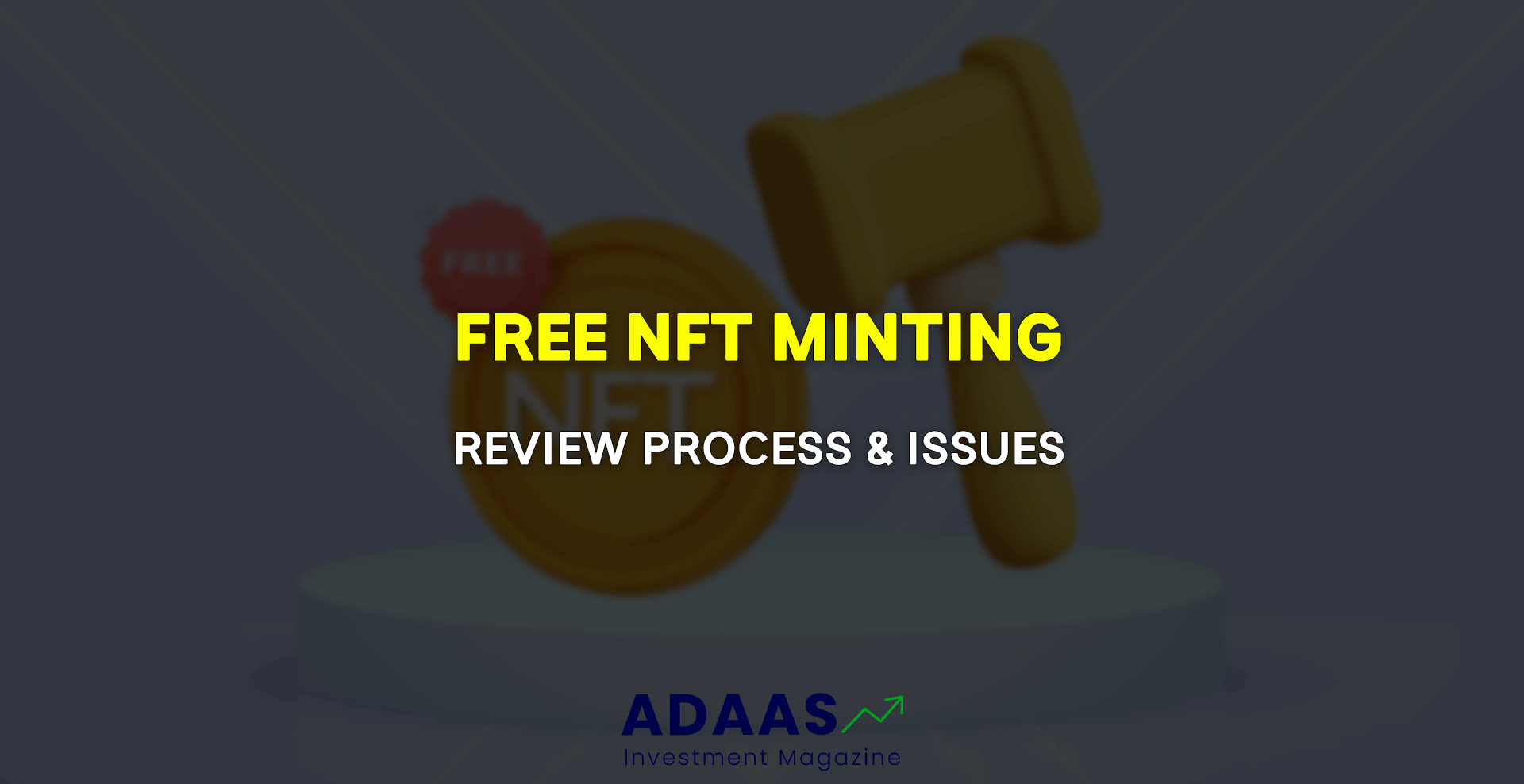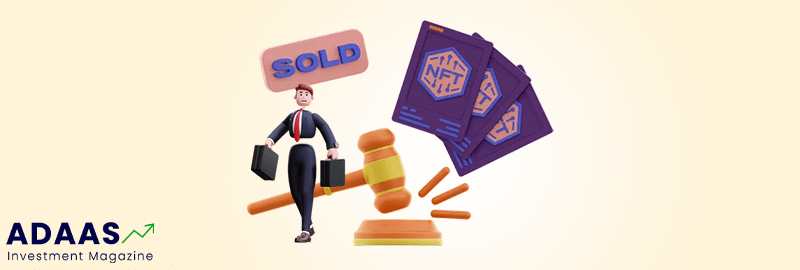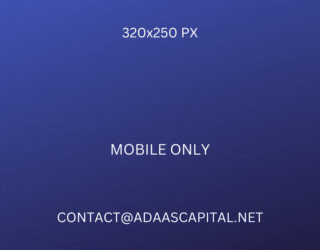How to Mint NFTs for Free? A Comprehensive Guide for Beginners!
Learn how to create unique digital assets without breaking the bank.
By reading the article “NFTs Free Minting” published in Adaas Investment Magazine, you will be fully familiar with the process of minting NFTs for free including some practical tips in this journey! This level of familiarity can be enough when you need educational information about this topic.
This podcast is published for you!
Have you ever heard of trading cards, like the ones that feature your favorite athletes or characters from movies and TV shows? Well, imagine if instead of a physical card, you had a unique digital version that nobody else had. That’s what an NFT is!
NFT stands for “non-fungible token,” which is a fancy way of saying that it’s a one-of-a-kind digital asset that can’t be replicated. NFTs can be anything from digital art and music to virtual real estate and even tweets.
What makes NFTs so special is that they are stored on a blockchain, which is a digital ledger that can’t be tampered with. This means that when you own an NFT, you have proof that it’s the only one in existence and nobody else can claim ownership.
As you can imagine, this has huge implications for the world of art, music, and other creative industries. With NFTs, creators can sell their digital works directly to fans without worrying about piracy or unauthorized copying. And because each NFT is unique, they can potentially sell for a lot of money to collectors who want to own a piece of digital history.
However, creating NFTs can often come with high fees that not everyone can afford. That’s why in this article, we’re going to teach you how to mint NFTs for free! We’ll go through everything you need to know, step-by-step so that you can create and sell your own unique digital assets without breaking the bank.
Table of Contents
Choosing a free NFT platform or marketplace
Choosing a free NFT platform or marketplace can be daunting, as there are numerous options available on the internet. In this section, we will guide you through the process of selecting the right platform for your needs.
First, let’s define what an NFT platform or marketplace is. Essentially, it is a website where creators can upload their digital assets and turn them into NFTs. These NFTs can then be sold or traded on the platform, with the creator earning a commission on each sale.
To get started, you’ll need to do some research on the various free NFT platforms available. Some of the most popular ones include Rarible, OpenSea, and Nifty Gateway, among others. Each platform has its own unique features and benefits, so it’s important to compare them carefully.
When comparing platforms, consider factors like user-friendliness, supported blockchains, and available features. User-friendliness refers to how easy the platform is to use, while supported blockchains determine which cryptocurrencies can be used to buy and sell NFTs on the platform. Available features refer to the platform’s capabilities, such as the ability to set royalties, create collections, and more.
Once you’ve done your research, narrow down your options to a few platforms that seem like a good fit. From there, you can explore each platform in more detail and sign up for an account if you decide it’s the right one for you. Remember, it’s always a good idea to read reviews from other users before making a final decision.
In summary, when choosing a free NFT platform or marketplace, consider factors like user-friendliness, supported blockchains, and available features. Do your research, narrow down your options, and explore each platform in more detail before making a final decision.
Setting up a digital wallet
Setting up a digital wallet is an important step when minting NFTs for free. A digital wallet is like a virtual piggy bank that holds your cryptocurrency and NFTs. It is important to have a digital wallet because without one, you won’t be able to store, send, or receive NFTs.
There are several types of digital wallets you can use to store your NFTs, but the most common ones are browser extensions like MetaMask and mobile apps like Trust Wallet. When choosing a wallet, it’s important to make sure it’s compatible with the NFT platform you plan to use.
MetaMask is a popular digital wallet that works with most NFT platforms. It’s a browser extension that you can install on your computer’s web browser. Trust Wallet is another popular option that you can download to your mobile phone. Both of these wallets support various cryptocurrencies and allow you to store and manage your NFTs.
To set up your digital wallet, you’ll need to create an account and follow the instructions provided by the wallet provider. You’ll also need to keep your private key safe and secure, as it’s used to access your wallet and your NFTs. Make sure to write it down or keep it in a safe place, as losing it could mean losing access to your wallet and your NFTs.
Once you have set up your digital wallet, you can then connect it to the NFT platform you plan to use to mint your NFTs. This will allow you to easily transfer your cryptocurrency and NFTs between your wallet and the platform.
Guide on connecting the wallet to the platforms
Once you have chosen a free NFT platform and set up your digital wallet, you will need to connect your wallet to the platform in order to mint and trade NFTs. Here’s a step-by-step guide to help you connect your wallet to the chosen platform:
– Open the platform and look for the “Connect Wallet” or similar button. This button is usually located in the top right corner of the screen.
– Click on the button and select your preferred wallet from the list of compatible wallets. Some popular wallets include MetaMask, WalletConnect, and Trust Wallet.
– If you haven’t already done so, download and install the wallet you have chosen onto your device.
– Once you have installed the wallet, follow the instructions to set it up and create a new wallet address. This address will be used to store your NFTs and other cryptocurrency assets.
– Once your wallet is set up, return to the NFT platform and click on the button to connect your wallet.
– A pop-up window will appear asking for permission to connect the wallet. Click “Connect” to authorize the connection.
– Your wallet is now connected to the platform, and you can start minting and trading NFTs.
It’s important to note that sometimes issues may arise when connecting your wallet to the platform, such as a failure to connect or an error message. If this happens, try refreshing the page, clearing your browser cache, or contacting customer support for assistance. Also, make sure that you have enough cryptocurrency in your wallet to cover any fees associated with minting or trading NFTs on the platform.
Preparing your digital asset for minting
Preparing your digital asset for minting means making sure it’s ready to become an NFT. Here’s what you need to do:
– Choose the file format: The most common formats for NFTs are JPEG, PNG, GIF, MP4, and even 3D models like OBJ or GLTF. Choose the format that best suits your artwork or collectible.
– Choose the resolution: The higher the resolution, the better the quality of the NFT. However, larger files may take longer to upload and increase gas fees on the blockchain. Strike a balance between quality and practicality.
– Consider metadata: Metadata is the information that describes your NFT. This includes things like the title, description, and artist information. Think carefully about how you want to describe your NFT and what information you want to include.
– Protect your work: NFTs are unique digital assets, but they can still be subject to plagiarism or theft. Consider adding watermarks or digital signatures to your work to protect it.
– Test before minting: Before minting your NFT, make sure to test it on the platform or marketplace you’ve chosen. Ensure that the image or video displays correctly and that all the metadata is included.
By taking these steps, you’ll be ready to mint your NFT with confidence!
Guidance on setting royalties, token supply, and other parameters
When creating an NFT, there are a few important parameters to consider. One of these is the royalty percentage, which is the amount of money the original creator of the NFT will receive each time it is sold on the marketplace. For example, if the royalty percentage is set at 10%, and the NFT is resold for $100, the original creator will receive $10.
Another parameter to consider is the token supply. This refers to the total number of tokens that will be created for the NFT. If you’re creating a one-of-a-kind NFT, then the token supply should be set at 1. However, if you’re creating a series of NFTs with similar characteristics, then you may want to set the token supply at a higher number.
You may also want to consider other parameters such as the Floor price that the NFT can be sold for, or the length of time that the NFT will be available for sale. These parameters can help you to better control the distribution and pricing of your NFT.
When setting these parameters, it’s important to carefully consider the value of your NFT and what you hope to achieve with it. Setting a high royalty percentage may help you to earn more money in the long run, but it may also make your NFT less attractive to potential buyers. Similarly, setting a low token supply may increase the scarcity of your NFT and make it more valuable, but it may also limit the number of potential buyers.
Ultimately, the parameters you choose will depend on your individual goals and the unique characteristics of your NFT. By carefully considering these parameters, you can create an NFT that is both valuable and attractive to potential buyers.
limitations or caveats associated with free minting
While free NFT minting is an excellent way to get started in the NFT world, there are a few limitations and caveats to keep in mind. One of the most significant drawbacks is that free platforms often have lower traffic and visibility compared to paid platforms. This means that it may be more challenging to get your NFT noticed by potential buyers.
Additionally, some free platforms may have restrictions on the number of NFTs you can mint or the file size and type that you can use. It’s essential to research and understands the platform’s limitations before minting your NFT.
Another potential issue is that free NFT platforms may not have the same level of security and support as paid platforms. Therefore, it’s crucial to take extra precautions when it comes to protecting your digital assets and keeping your private keys secure.
Lastly, some free NFT platforms may not be as established as paid platforms and may have a higher risk of shutting down or discontinuing their services. This could potentially result in the loss of your NFT or the inability to transfer or sell it.
Overall, it’s essential to do your research and weigh the pros and cons before deciding to mint your NFT on a free platform. While there may be some limitations and caveats to consider, it can still be a great way to get started in the world of NFTs without incurring significant costs.
Troubleshooting tips for common issues
When minting an NFT, you might encounter some issues that prevent you from completing the process. Here are some common issues and troubleshooting tips to help you solve them:
Wallet connection issues: If you have trouble connecting your wallet to the NFT platform, make sure that you have the correct wallet software and that it is properly configured. Also, check that you are connecting to the right network, such as the Ethereum mainnet or a testnet.
Gas fees: While free minting is available on some platforms, you may still have to pay gas fees for transactions. Gas fees cover the cost of processing your transaction on the blockchain. To minimize gas fees, try to mint during times of low network congestion and adjust the gas price to a lower value.
Technical requirements: Each NFT platform may have specific technical requirements for digital files, such as image resolution and file format. If you encounter issues with uploading or processing your files, make sure they meet the platform’s requirements.
Network congestion: If the blockchain network is congested, your transaction may take longer to process or may be delayed. You can check the network status to see if there are any ongoing issues and try to mint at a later time.
Security issues: Protecting your digital assets is crucial in the NFT space. Always keep your private keys secure and never share them with anyone. Be cautious of phishing attempts and scams, and use reputable platforms and wallets to minimize the risk of fraud or theft.
Conclusion
minting NFTs for free can be a fun and exciting way to showcase your creativity and potentially earn some money. By following the step-by-step guide provided in this article, you can easily create and mint your own NFT without incurring any fees. Remember to choose a platform that suits your needs and offers the features you require.
Setting up a digital wallet is an important step that should not be overlooked, as it is necessary to connect your wallet to the platform and store your NFT. Properly preparing your digital asset for minting is also essential to ensure the best quality and avoid any issues with plagiarism or theft. Don’t forget to configure your NFT with the appropriate metadata and token attributes and set the necessary royalties and token supply.
Finally, keep in mind that while free minting can be a great way to start, there may be limitations and caveats associated with it, so it’s important to do your research and be aware of any potential risks. Good luck on your NFT minting journey!

The End Words
At Adaas Capital, we hope that by reading this article you will be fully immersed in How to mint NFTs for free! You can help us improve by sharing this post which is published in Adaas Investment Magazine and help optimize it by submitting your comments.
FAQ
Is it possible to mint an NFT for free?
Yes, it is possible to mint an NFT for free on certain platforms. Read this guide which is provided for you!
What platforms have free NFT minting?
There are several platforms that offer free NFT mintings, such as Rarible, OpenSea, Nifty Gateway, and more.
What is lazy minting?
Lazy minting is a method of minting NFTs where the metadata is stored off-chain until the NFT is sold or transferred, reducing the upfront costs associated with minting.
Is minting like mining?
No, minting and mining are different processes in the cryptocurrency world. Mining involves solving complex mathematical equations to validate transactions on a blockchain and earn rewards, while minting involves creating and issuing new tokens or assets on a blockchain.










Hello there! This is my first comment here so I just wanted to give a quick shout out and say I genuinely enjoy reading through your posts. Can you suggest any other blogs/websites/forums that cover the same subjects? Thanks!